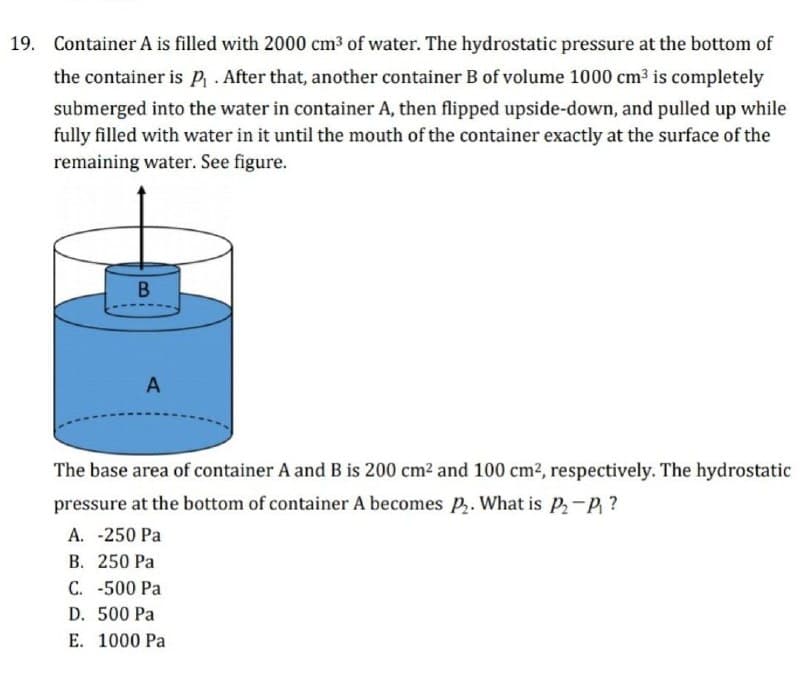19. Container A is filled with 2000 cm3 of water. The hydrostatic pressure at the bottom of the container is p . After that, another container B of volume 1000 cm3 is completely submerged into the water in container A, then flipped upside-down, and pulled up while fully filled with water in it until the mouth of the container exactly at the surface of the remaining water. See figure. B A The base area of container A and B is 200 cm2 and 100 cm2, respectively. The hydrostatic pressure at the bottom of container A becomes P. What is P-P ? A. -250 Pa B. 250 Pa C. -500 Pa D. 500 Pa E. 1000 Pa
Fluid Pressure
The term fluid pressure is coined as, the measurement of the force per unit area of a given surface of a closed container. It is a branch of physics that helps to study the properties of fluid under various conditions of force.
Gauge Pressure
Pressure is the physical force acting per unit area on a body; the applied force is perpendicular to the surface of the object per unit area. The air around us at sea level exerts a pressure (atmospheric pressure) of about 14.7 psi but this doesn’t seem to bother anyone as the bodily fluids are constantly pushing outwards with the same force but if one swims down into the ocean a few feet below the surface one can notice the difference, there is increased pressure on the eardrum, this is due to an increase in hydrostatic pressure.
Please solve the problem with the step and explaining, in 30 minutes, im very needed the solution

Step by step
Solved in 2 steps with 1 images









